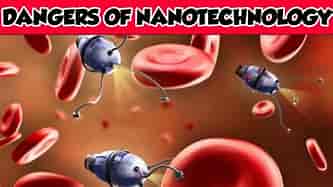
The Hidden Dangers of Nanotechnology
Nanotechnology is often hailed as a revolutionary field, promising advancements in medicine, electronics, and materials science. Imagine tiny particles—so small they can’t be seen with the naked eye—working wonders in drug delivery systems or making materials stronger and lighter. However, with great innovation comes great responsibility. As we delve into the world of nanotechnology, we must also confront its hidden dangers, particularly regarding toxicity and unintended consequences. What are these dangers? How do they affect us? Let’s explore the intricate landscape of nanotechnology and its potential risks.
Nanotechnology refers to the manipulation of matter on an atomic or molecular scale, typically within the size range of 1 to 100 nanometers. To put that into perspective, a nanometer is one-billionth of a meter—about 100,000 times smaller than the diameter of a human hair! This technology allows scientists to create materials with unique properties that differ significantly from their larger counterparts.

The applications of nanotechnology are vast and varied:
While these applications promise significant benefits, they also raise questions about safety and long-term effects.
Nanotechnology offers groundbreaking advancements that can improve our quality of life. For example:
Despite these benefits, the tiny size of nanoparticles can lead to unexpected toxicity. Once inside the body, nanoparticles can interact with cells in ways that larger particles cannot. This raises concerns about their potential harmful effects on human health and the environment.
Nanotoxicity refers to the toxic effects that nanoparticles may have on living organisms. Unlike traditional chemicals, nanoparticles can penetrate biological barriers due to their small size, leading to unforeseen interactions at the cellular level.
The mechanisms behind nanotoxicity are complex and not fully understood. However, several factors contribute to how nanoparticles may cause harm:
Various types of nanoparticles pose different risks:
Silver nanoparticles are widely used for their antimicrobial properties. However, studies have shown they can cause cytotoxicity in human cells and induce oxidative stress.
Often found in sunscreens and food products, titanium dioxide nanoparticles have been linked to respiratory issues when inhaled and may cause DNA damage.
These cylindrical structures are praised for their strength but have raised concerns over lung toxicity when inhaled, similar to asbestos fibers.
Used in cosmetics and sunscreens, zinc oxide nanoparticles can lead to skin irritation and oxidative stress when absorbed into the skin.
Understanding how we come into contact with nanoparticles is crucial for assessing risk:
Many nanoparticles are airborne due to industrial processes or consumer products. Inhalation can lead to respiratory problems and systemic exposure.
Nanoparticles may enter our bodies through contaminated food or water sources. Once ingested, they can affect gut health and overall metabolism.
Products containing nanoparticles—like lotions or sunscreens—can penetrate the skin barrier, raising concerns about long-term exposure effects.
As awareness grows about potential risks associated with nanotechnology, regulatory bodies have begun implementing guidelines:
The Environmental Protection Agency (EPA) oversees many aspects of nanotechnology regulation but often relies on existing frameworks rather than specific guidelines for nanoscale materials.
The EU has stricter regulations regarding nanomaterials under REACH (Registration, Evaluation, Authorisation and Restriction of Chemicals), requiring manufacturers to assess safety before market entry.
Despite these frameworks, regulating nanotechnology remains challenging due to:
Media coverage plays a significant role in shaping public perception of nanotechnology. Sensational stories about potential dangers often overshadow scientific discussions about benefits.
As society grapples with both excitement over new technologies and fear over potential risks, finding a balance between innovation and safety becomes crucial. Public discourse must prioritize informed decision-making based on sound science rather than fear-based narratives.
Several studies have highlighted adverse health effects linked to nanoparticle exposure:
Research indicates that inhaling certain nanoparticles can lead to chronic respiratory diseases such as asthma or even lung cancer over time.
Studies show that some nanoparticles cross the blood-brain barrier, potentially leading to neurotoxicity or cognitive impairments.
Nanoparticles also pose risks beyond human health:
Agricultural use of nanopesticides raises concerns about soil health; certain nanoparticles may disrupt microbial communities essential for nutrient cycling.
Runoff from industrial sites may introduce harmful nanoparticles into waterways, affecting aquatic life through bioaccumulation processes.
More research is needed to understand the long-term implications of nanoparticle exposure on human health and ecosystems fully. This includes studying chronic effects over extended periods as well as identifying vulnerable populations at higher risk.
As awareness grows regarding potential hazards associated with certain nanomaterials, researchers are exploring safer alternatives. This includes designing less toxic formulations while maintaining desired properties.
The hidden dangers of nanotechnology remind us that innovation must go hand-in-hand with caution. While this field holds immense promise, it also presents challenges we cannot ignore. By fostering open dialogue among scientists, regulators, industry stakeholders, we can work toward creating a future where technology serves humanity without compromising safety or well-being.
The Future of Homes Is Smart https://youtu.be/dxeC41gVSQ4 Imagine walking into your house, saying “lights on”,…
Weather plays a pivotal role in farming, influencing everything from planting schedules to irrigation needs.…
Introduction Imagine a world where farming decisions are guided not just by intuition but by…
Introduction Imagine a world where robots and artificial intelligence (AI) handle the backbreaking work of…
Introduction AI models for drought prediction, and made you ever wondered how farmers and researchers…
https://youtu.be/PpIlTJ0myoM Introduction: Why Bother Monitoring Water Anyway? IoT Aquaculture project If you’ve ever tried growing…
This website uses cookies.